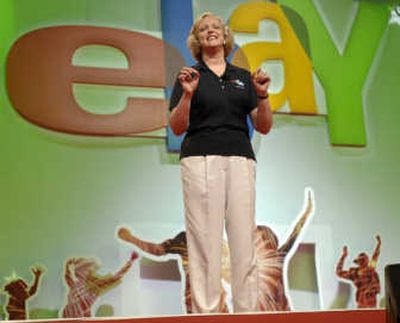A stalled eBay revamps its image

BOSTON – When Pierre Omidyar founded eBay 12 years ago, he wanted to build the world’s most efficient marketplace. At the very least, he launched the most comprehensive one. Today eBay Inc. is a conglomeration of Web sites where people sell everything from car parts to carp arts. (What den couldn’t use a watercolor of a fish?)
But with $60 billion worth of goods changing hands on eBay’s worldwide sites this year, all that stuff has a downside: It can be a drag to pick something to buy. If you were browsing for a video game system, how would you begin to choose among the 1,342 Nintendo Wiis listed on eBay one day this week?
And so with eBay entering something resembling middle age, with growth slowing and the stock price in a funk, the company is undertaking a crucial overhaul. The goal is to make buying things easier, more entertaining and more like shopping in the physical world – three counts on which the company has fallen behind.
“Our user experience has always been fantastic, but it didn’t keep up, in my view, as well as it should have,” CEO Meg Whitman said in an interview Friday on the sidelines of the “eBay Live” user celebration in Boston. “You will see more changes to eBay’s buyer experience in the next 12 months than you probably have seen in the past three or four years.”
For example, to reduce buyers’ skittishness about sellers they don’t know, eBay has broadened the feedback criteria that can be left for vendors, and it has tried new strategies for reducing fraud. The company also is trying to make vendors’ shipping costs more transparent, so fewer buyers feel sandbagged by hidden charges.
EBay just added a “bid assistant” program that lets people put multiple items on a wish list. If shoppers fail to win an auction for one of the products, the software enters them in another. That tackles a longtime eBay bugaboo because it raises shoppers’ chances of actually winning an auction without increasing the prospect they bust their budget winning more than one.
Other moves make eBay more like typical e-commerce sites, such as last year’s birth of eBay Express, where customers can load fixed-price merchandise from several sellers into one shopping cart and check out at once.
Perhaps most dramatically, eBay is crafting a more social experience, so people browsing from isolated computers feel at least somewhat like they’re going to the mall with a pack of buddies.
That is why the company is extending its buying-and-selling platform so it can run on mobile devices, blogs, networking sites like Facebook and little “widgets” that live outside a Web browser on computer desktops. That same motive prompted eBay’s 2005 purchase of Skype, an Internet calling service, for $4.1 billion – a figure that still boggles some analysts. Here’s the challenge: While the new lures for buyers are designed to help vendors move more products, eBay has to be careful not to upset its treasured community of sellers who earn serious bucks on the site and can be prickly about changes.
“The more buyers they can bring in, we’re going to cheer that,” said Linda Hartman, a longtime eBay “PowerSeller” who offers dinnerware from Bristol, Wis., and worries that a glut of sellers hurts her business. But she added that eBay might be banking too much on fancy Web adornments that will have little overall effect.